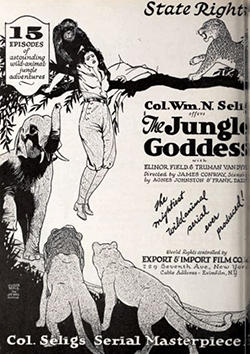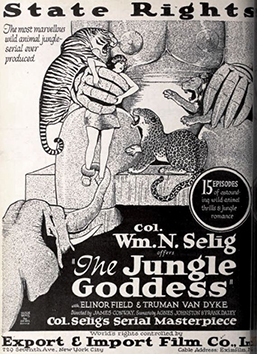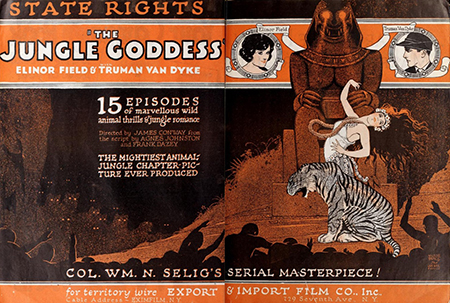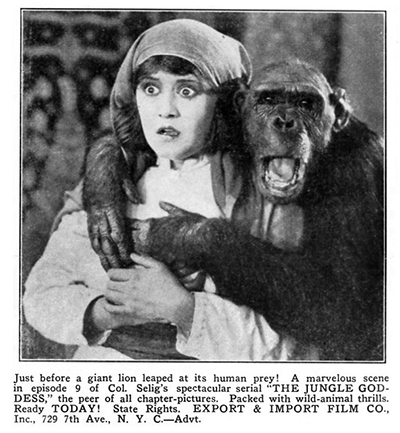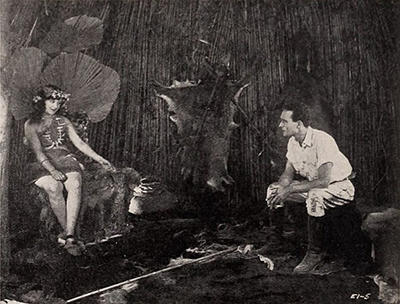J …is for
The Jungle Goddess
Stanley in Africa (1922), a picturization of the search for the lost Dr. Livingstone, similarly required some rather heavy embellishments with various fictional details and subplots in order to extend the serial. A Dangerous Adventure, released that same year, was plagued by animal attacks and other production problems but nonetheless brought moviegoers into a jungle storm, to a volcano, and into a lion’s pit, a leopard’s cave, a hippo’s swamp, and a tiger’s lair.
The acting, especially by the two actresses who portrayed Betty (the young Vonda Phelps and the older Elinor Field), was excellent; and the direction by James Conway was strong. But it was the “reality” of the jungle, with its elaborate sets, that was most impressive. Selig demonstrated once again why he was the master of animal pictures. Audiences were also titillated by the somewhat risqué depiction of the older Betty, clad in her bare-backed jungle dress and animal-tooth necklace.
Survival Status: According to the Columbia Women Film Pioneers Project, several episodes (some complete, some only one-reel), survive at the UCLA Film & Television Archive.
Director: James Conway
Release Date: May 15, 1922
Release Company: William N. Selig Productions, distributed (on a State Right basis) by Export-Import Film Company.
Cast: Elinor Field (Betty Castleton), Truman Van Dyke (Ralph Dean), Vonda Phelps (Betty as a young girl), Marie Pavis (Betty’s mother), Lafe McKee (Chief Obar Sen), Olin Francis (High Priest), William Platt (Constable), L. M. Wells (Dr. James Scranton), George Reed (Native Guide).
Episodes: 1. Sacrificed to The Lions (three reels, with the rest of the episodes in two reels). 2. The City of Blind Waters. 3. Saved by the Great Ape. 4. The Hell Ship. 5. Wild Beasts in Command. 6. Sky High with A Leopard. 7. The Rajah’s Revenge. 8. The Alligator’s Victim. 9. At Grips with Death. 10. The Leopard Woman. 11. Soul of Buddha. 12. Jaws of Death. 13. Cave of Beasts. 14. Jungle Terrors. 15. The Mad Lion.

